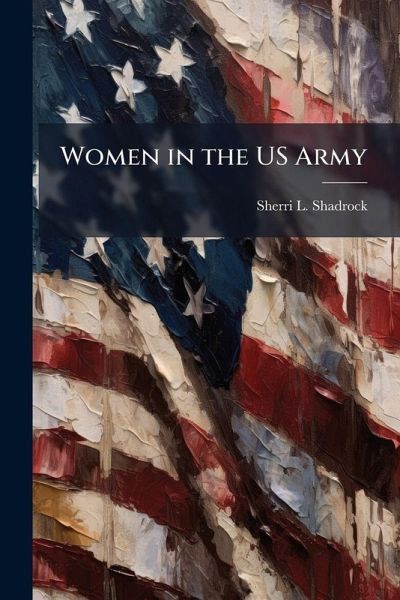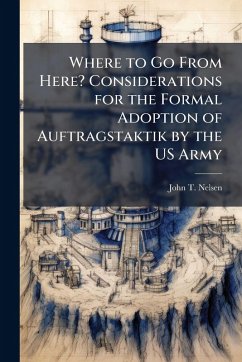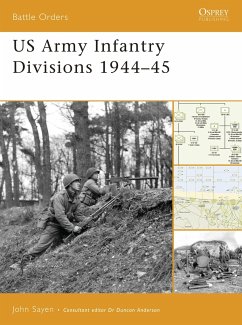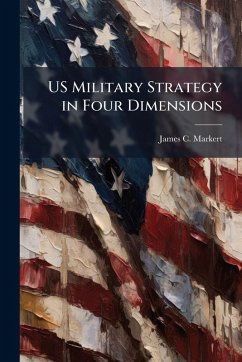
Women in the US Army

PAYBACK Punkte
9 °P sammeln!
This monograph examines the history and significance of women serving in the United States Army from 1942 through 2007. The author's thesis is that an organizational Revolution in Military Affairs occurred in the US Army pertaining to the permanency, increased scope and exponential expansion of the numbers of women serving. The monograph contains essentially six chapters consisting of an introduction, four core chapters and a conclusion summarizing key points. Nine appendices are provided at the end of the paper. The introduction presents the purpose, research question and monograph structure ...
This monograph examines the history and significance of women serving in the United States Army from 1942 through 2007. The author's thesis is that an organizational Revolution in Military Affairs occurred in the US Army pertaining to the permanency, increased scope and exponential expansion of the numbers of women serving. The monograph contains essentially six chapters consisting of an introduction, four core chapters and a conclusion summarizing key points. Nine appendices are provided at the end of the paper. The introduction presents the purpose, research question and monograph structure as well as the relevance and timeliness of the topic. The research question posed is: "What is the significance to the U.S. Army regarding the changed nature and expansion of women's military roles?" Chapter One focuses on the creation of the Women's Army Auxiliary Corps (WAAC) and the Women's Army Corps (WAC) during the World War II era and briefly discusses women's roles in the 1960s. A portion of the chapter lays the foundation for the argument that women's service constitutes a Revolution in Military Affairs (RMA). Chapter Two presents the evolution of roles from the 1970s onward culminating with the revolutionary current Global War on Terrorism operations. Chapter Three presents the dynamic influence of warfare upon women's roles and examines the Contemporary Operational Environment (COE) and strategic setting for the twenty-first century. Chapter Four focuses on recommendations the US Army might adopt toward optimizing the current force and its human resources, or soldiers - which are the army's most precious asset. The army's tremendous need for human resources, in conjunction with the noncontiguous, nonlinear contemporary operational environment upon which the Global War on Terror will be executed presents increased opportunities for highlighting the contributions and sacrifices made by women in the nation's defense. Acknowledging that soldiers, or human resources, are This work has been selected by scholars as being culturally important, and is part of the knowledge base of civilization as we know it. This work was reproduced from the original artifact, and remains as true to the original work as possible. Therefore, you will see the original copyright references, library stamps (as most of these works have been housed in our most important libraries around the world), and other notations in the work. This work is in the public domain in the United States of America, and possibly other nations. Within the United States, you may freely copy and distribute this work, as no entity (individual or corporate) has a copyright on the body of the work. As a reproduction of a historical artifact, this work may contain missing or blurred pages, poor pictures, errant marks, etc. Scholars believe, and we concur, that this work is important enough to be preserved, reproduced, and made generally available to the public. We appreciate your support of the preservation process, and thank you for being an important part of keeping this knowledge alive and relevant.












